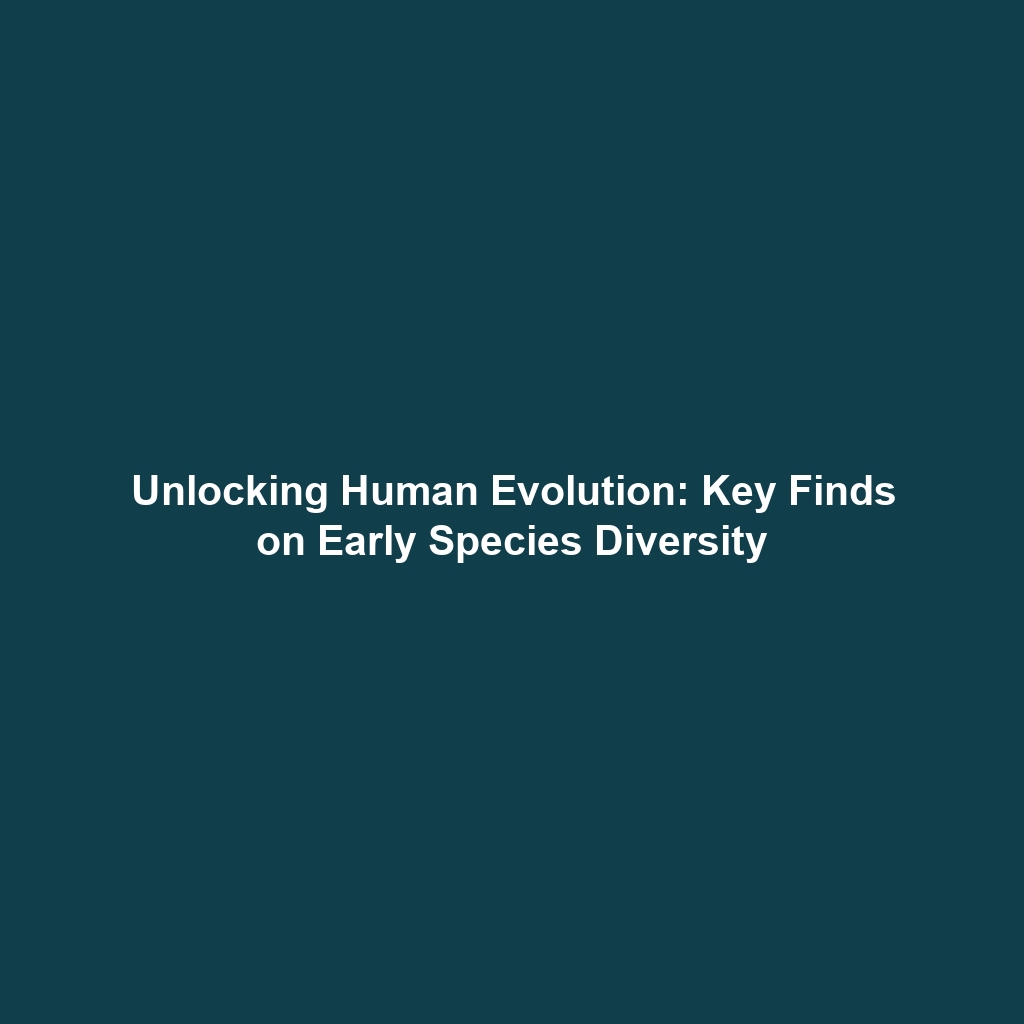The Significance of Early Human Species Finds in Understanding Diversity and Adaptability
Recent archaeological discoveries provide critical insights into the diversity and adaptability of early human species. These finds reveal significant patterns in the evolutionary journey, showcasing how various human ancestors adapted to different environments over millennia. Understanding these adaptations is vital in piecing together the complex narrative of human evolution. This article explores the relevance of these findings within the broader context, highlighting their implications for our understanding of early human life.
Key Concepts
To grasp the significance of these early human species findings, it is essential to explore key concepts related to human evolution:
- Diversity: Early human species exhibited a remarkable range of physical and cultural traits adapted to various ecological niches.
- Adaptability: Understanding how early humans adapted tools and social structures is crucial for insights into survival mechanisms.
- Migration Patterns: Discoveries highlight migratory behaviors that showcase adaptability to changing environments.
Applications and Real-World Uses
The findings about early human diversity and adaptability have practical applications in various fields, including:
- Anthropology: Enhancing the understanding of human behaviors and cultural evolution.
- Education: Informing curricula on human evolution and anthropology.
- Conservation Biology: Providing insights into human-environment interactions for sustainable practices.
Current Challenges
While the significance of these findings is profound, several challenges hinder the study and application of early human species data:
- Preservation Issues: Fossil deterioration can compromise valuable information.
- Funding Limitations: Insufficient funding restricts further research opportunities.
- Bias in Findings: Some discoveries may be subject to interpretation biases based on existing narratives.
Future Research and Innovations
The future of research regarding early human species looks promising, with several innovations on the horizon:
- DNA Analysis: Advanced genetic technologies may offer deeper understandings of ancient human interbreeding.
- 3D Reconstruction: Innovations in 3D imaging can provide new insights into the anatomy and lifestyle of our ancestors.
- Interdisciplinary Approaches: Collaborative research integrating genetics, archaeology, and anthropology will enhance understanding.
Conclusion
In summary, the significance of recent findings related to early human species is crucial for understanding their diversity and adaptability, which is integral to the broader scope of human evolution. As research progresses and new technologies emerge, our comprehension of how early humans thrived will only deepen. For readers interested in exploring more about human evolution, consider reviewing additional materials on educational resources and ongoing research initiatives.

